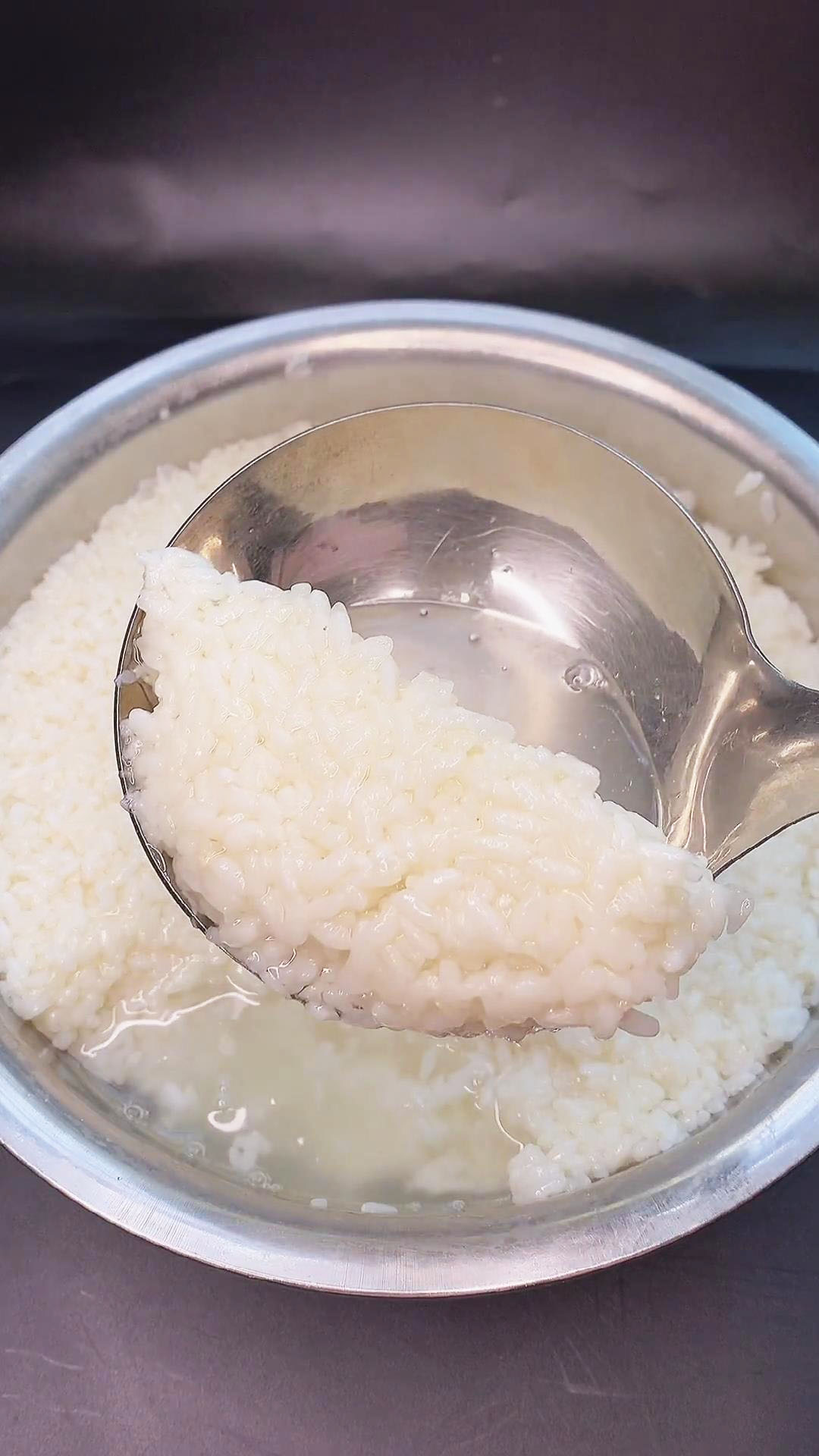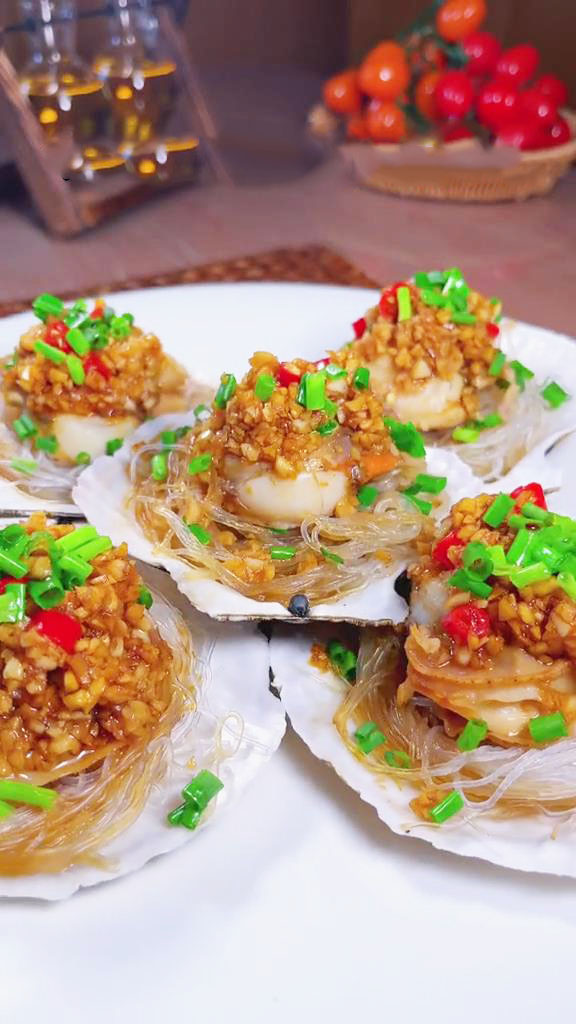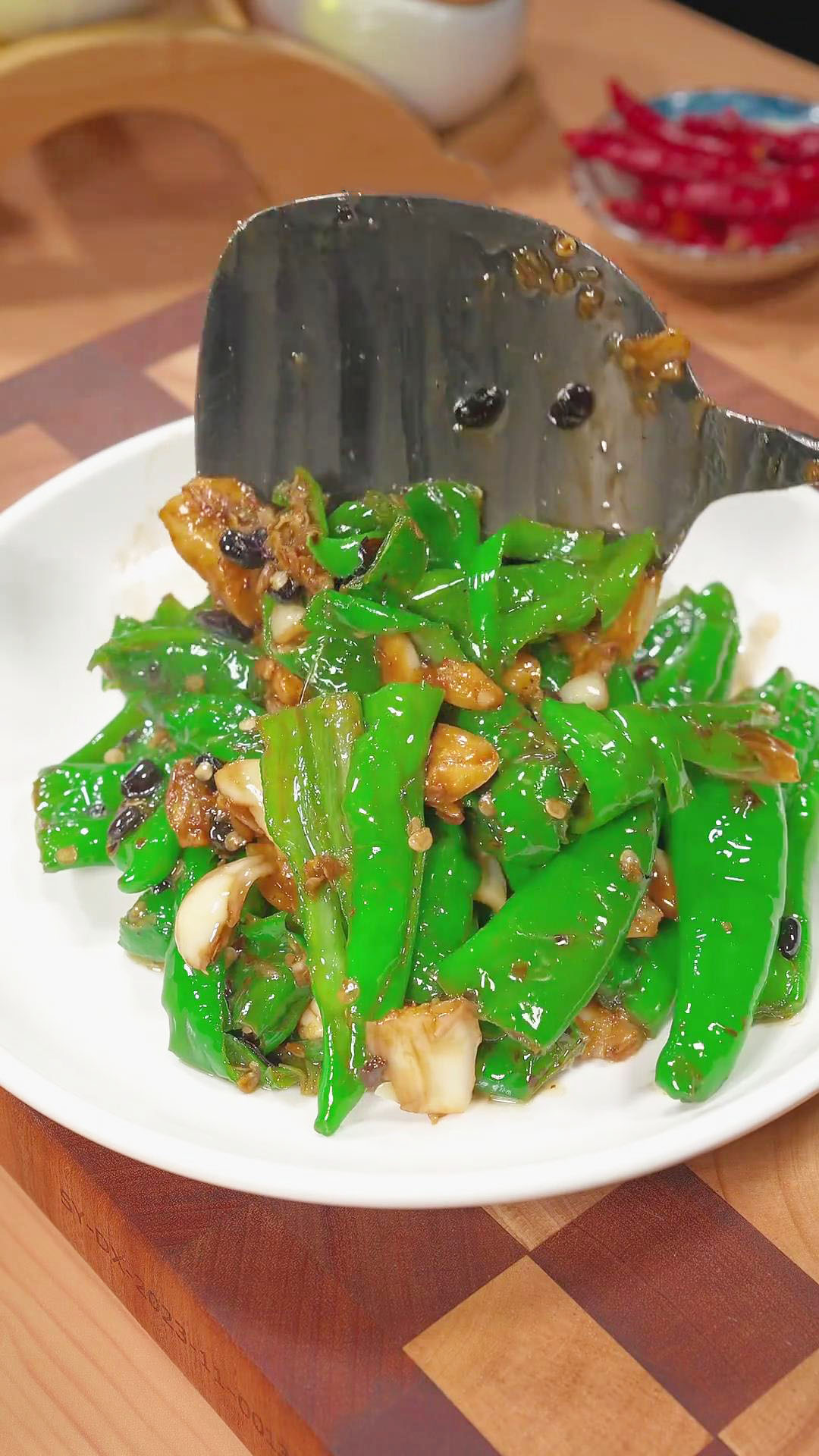Make your own sweet fermented rice with this detailed recipe guide using glutinous rice, water, and Shanghai yeast balls. The steps are easy and the fermentation process takes only two days. When you have sweet fermented rice, you can use it for sweet and savory dishes!
What Is Sweet Fermented Rice (酒酿/Jiu Niang)?
Sweet fermented rice is also known as sweet rice wine or jiu niang (酒酿). It is made by fermenting glutinous rice with Shanghai yeast balls and water for a couple of days. The result – a sweet soup with a creamy texture just like porridge.
It smells like alcohol but contains low levels of alcohol, up to 3.5%. To make this dish, the glutinous rice is first soaked overnight and steamed until soft and sticky. Then, the steamed rice is mixed with water and Shanghai yeast balls, which makes the rice sweet.
What’s left to do is let it ferment for two days and wait until it is ready. It is super easy to follow the steps in making sweet fermented rice. However, there are a few things that can affect the results, so make sure to read on to learn about do’s and don’ts and ingredient tips.
Why You’ll Love Sweet Fermented Rice
Apart from being delicious, sweet fermented rice has several benefits for the body. According to Traditional Chinese Medicine (TCM), sweet fermented rice strengthens the qi (vital energy) and blood of our body, specifically the spleen and stomach. Sweet fermented rice contains nutrients and good bacteria to boost our immune system and aid in digestion.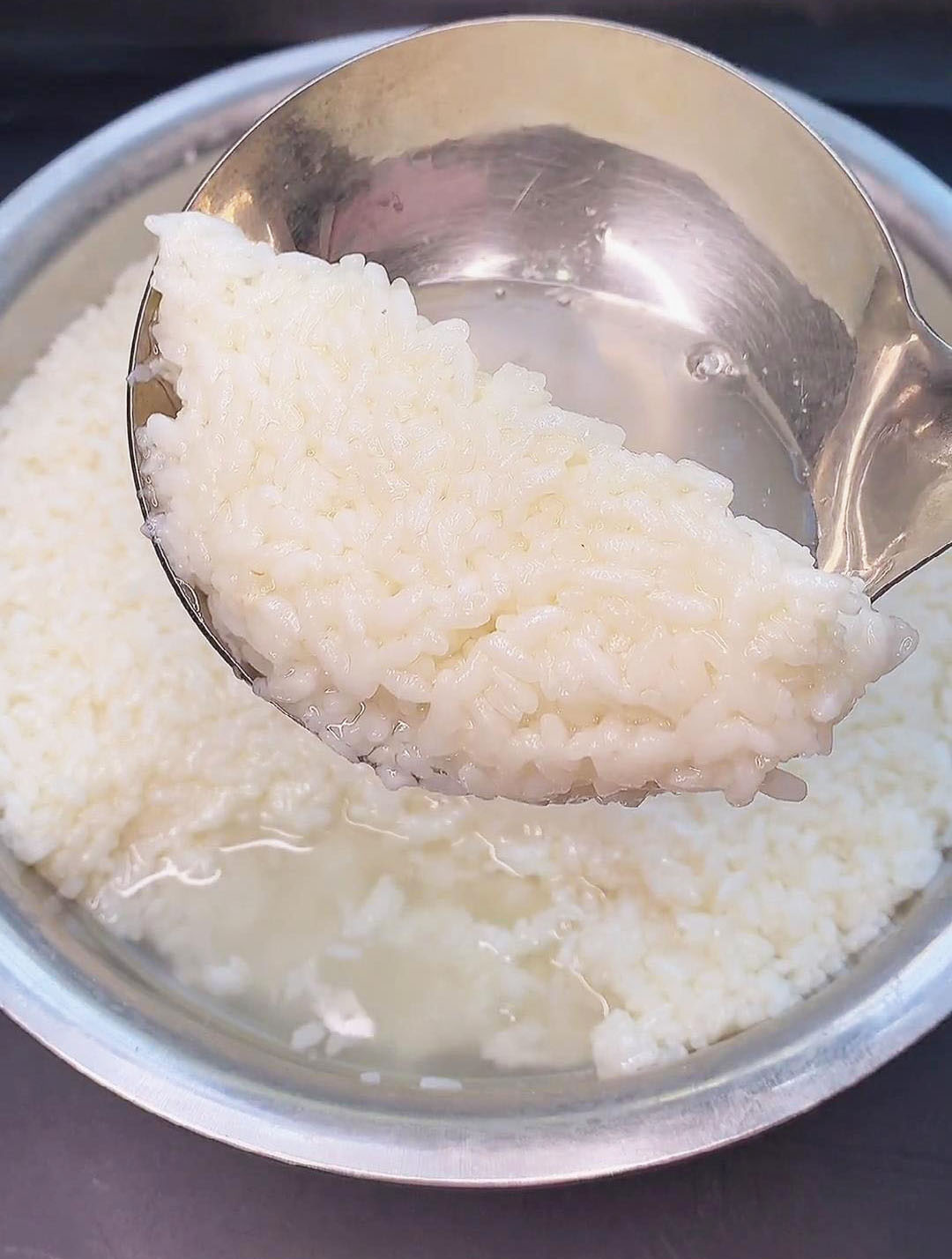
Consuming sweet fermented rice also helps support brain health and lower cholesterol. Moreover, it has anti-inflammatory properties which help reduce swelling. Although sweet fermented rice contains a low level of alcohol, consult your doctor before consuming it.
So, how can you enjoy sweet fermented rice? Here are several ways to use sweet fermented rice:
- Use as an ingredient in Chinese desserts, buns, breads, and pastries
- Use it for savory dishes
- Eat it with Tang Yuan (Black Sesame Glutinous Rice Balls)
- Eat it with eggs, such as boiled egg soup or poached eggs
- Enjoy it on its own
- Serve it cold with red bean soup
- Have it for breakfast with yogurt
- Use it to make Jiu Niang Tang Yuan Soup
3 Main Ingredients To Make Sweet Fermented Rice
The only ingredients you need are glutinous rice, yeast, and water. Listed below are my recommendations on the preferred type of ingredient, as well as do’s and don’ts when handling the ingredients. Follow these tips to ensure you get the best results.
Glutinous Rice
Glutinous rice, also known as sweet rice or sticky rice, is the primary ingredient used in making zongzi and lo mai gai. I recommend using short-grain glutinous rice instead of long-grain because it is sweeter when fermented. It becomes sweet when the yeast converts the starch of the rice into glucose.
The glutinous rice is soaked before steaming for 30 minutes. Soaking the rice first ensures it is evenly cooked when steamed, yielding a better tender texture.
Yeast
I used 2g of Shanghai yeast balls, which you can find on Amazon or at your local Asian grocery store. Simply search for “Dried Rice Wine Yeast Balls” on Amazon. This is essential to start the fermentation process. To use a Shanghai yeast ball, it is ground into powder and then mixed with the glutinous rice.
Although it is common to make sweet fermented rice in the summer, you should also avoid fermenting it at very hot temperatures. If the temperature is more than 40°C, it may kill the yeast. When the yeast is killed, the fermentation process stops and the rice will taste sour.
On the other hand, if the temperature is too cold, the fermentation process will be too slow and the rice will not taste sweet. It is best to ferment the rice at around 25°C to 30°C.
Water
Water is essential in activating the fermentation process as well. Since it is crucial to keep everything clean for the fermentation process, avoid using tap water and use clean drinking water instead. You can also boil water and allow it to cool before using.
Letting the boiled water cool is necessary since you will be mixing it with the rice using your hands. I mixed 1200g of glutinous rice with 500 ml of water. The water should be added gradually, not all at once, to allow the rice to absorb it properly.
It is important to note that too much water can make the fermented rice sour and too mushy. On the other hand, insufficient water will also not activate the yeast which can lead to less liquid being produced.
Pro Tips For A Successful Sweet Fermented Rice
A successful sweet fermented rice should produce a sweet liquid equal to the rice amount. It should also have a sweet smell like wine. Moreover, the rice becomes compact or sticks sticking together after fermentation and should have a porridge-like texture when eaten.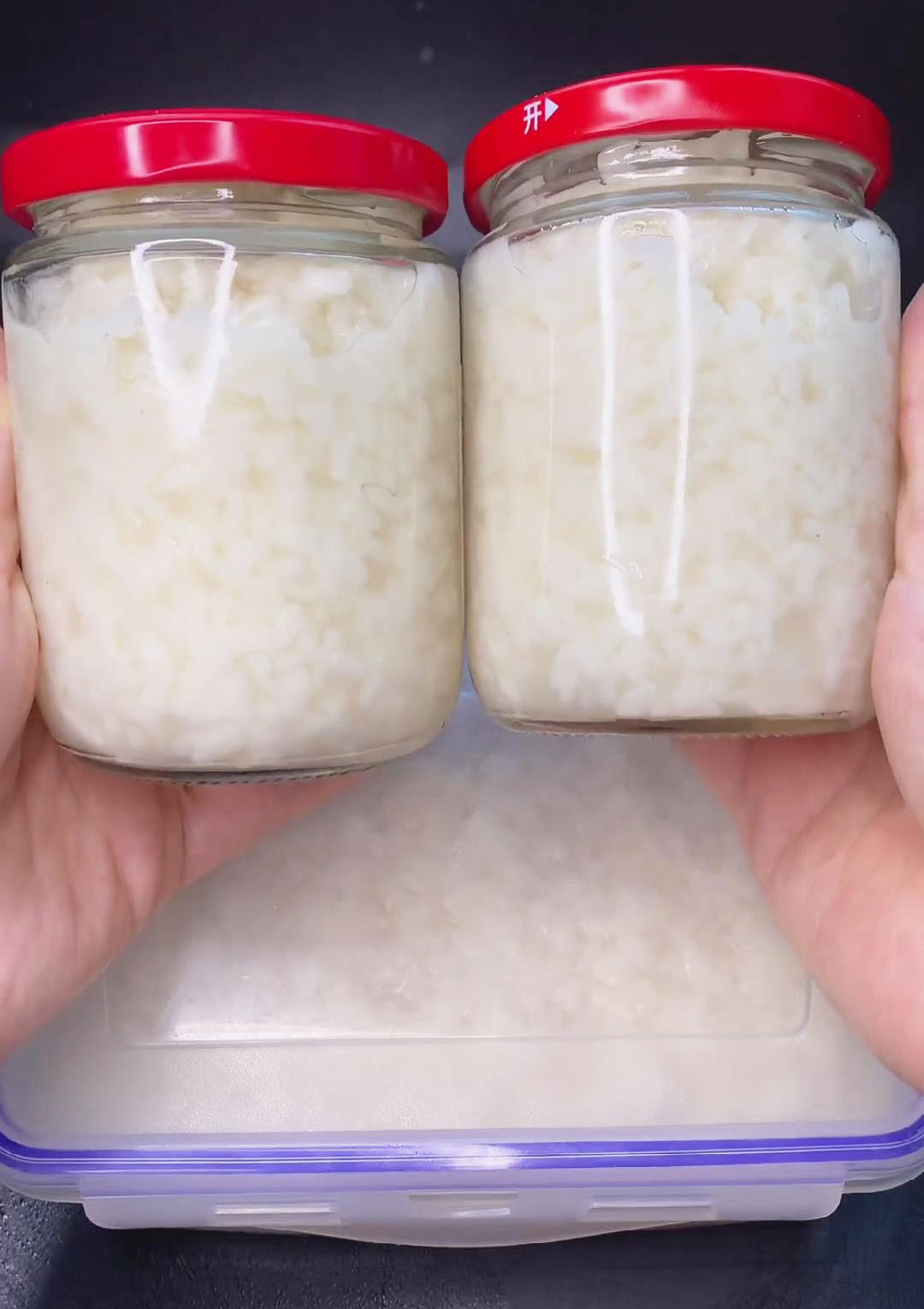
To achieve a successful sweet fermented rice, here are some reminders to keep in mind:
- All utensils and kitchenware used should be clean or sterilized.Using contaminated kitchenware is one of the top reasons why your sweet fermented rice spoils or grows molds. This rule should be applied in all aspects, from making to storing and eating the sweet fermented rice. You can sterilize all kitchenware in boiling water for 5 minutes. Make sure the kitchenware is safe for boiling.
- Do not ferment for too long. Otherwise, the rice will taste sour and not sweet. Generally, fermentation should take about 2 days in the summer or in warm environments. On the other hand, fermentation in a cold environment will take longer than 2 days. If it is the cold season, you can create a warmer environment for the rice by placing it in the oven and activating the Proof Mode. If your oven doesn’t have this feature, you can still make it warm by placing a cup of boiled water in the oven and replacing it when it starts to cool. In this way, the rice will ferment naturally in a warm environment.
- Do not ferment in very hot environments. When it is too hot in the summer, this will speed up fermentation. This can cause the rice to go sour because it eventually becomes over-fermented by the 2nd day. To prevent this from happening, you can ferment the rice in an air-conditioned room for a slightly cooler environment. Alternatively, placing a damp towel on top of the sealed rice also helps create a cooler environment. Moreover, make sure the rice is fermented in a warm and dark place away from direct sunlight or heat.
- Avoid contamination by wrapping the rice container with plastic wrap. Make sure to double-wrap it to prevent contamination or exposure to air. I recommend sealing it with clear plastic wrap so you can monitor the rice’s current status without needing to open it.
- Store it in an airtight glass jar with a lid and use a serving spoon each time.Whenever you want to eat sweet fermented rice, use a clean serving spoon every time to prevent contamination. You can store it in the fridge and keep it for a month. However, it is best to consume it in a week since the longer it sits in the fridge, the more sour it will be. It becomes sour in the long run because the fermentation process never stops in the fridge but only slows down. You can also store it in the freezer, but make sure to use a freezer-safe container. Frozen sweet fermented rice can last for 3 months or more, depending on how the sweet fermented rice was properly made. When you are ready to use the sweet fermented rice, thaw it in the fridge and consume it within a week.
Here’s What You Need: Ingredients And Kitchenware
Kitchenware (Clean or Sterilized)
- Bowl for soaking
- Steaming equipment
- Kitchen gloves
- Clean pot for fermentation
- Plastic wrap
Ingredients
- 1200g of glutinous rice (preferably short-grain for a sweeter taste)
- 500ml of water (do not use tap water)
- 2g of Shanghai yeast balls
Detailed Instructions To Make Sweet Fermented Rice
Basically, the rice is first prepared by soaking and steaming it. Then, water and yeast are added before starting the fermentation process. For a clearer overview of the steps, check out my short tutorial video on Instagram or TikTok.
- First, soak the glutinous rice overnight.Soaking makes the rice more tender after steaming.

- After soaking, spread the rice evenly on a steamer tray lined with cloth and create holes in it. Steam for 30 minutes or until the rice becomes soft and sticky. Use steaming equipment, and avoid using a rice cooker for this step since it may affect the taste.
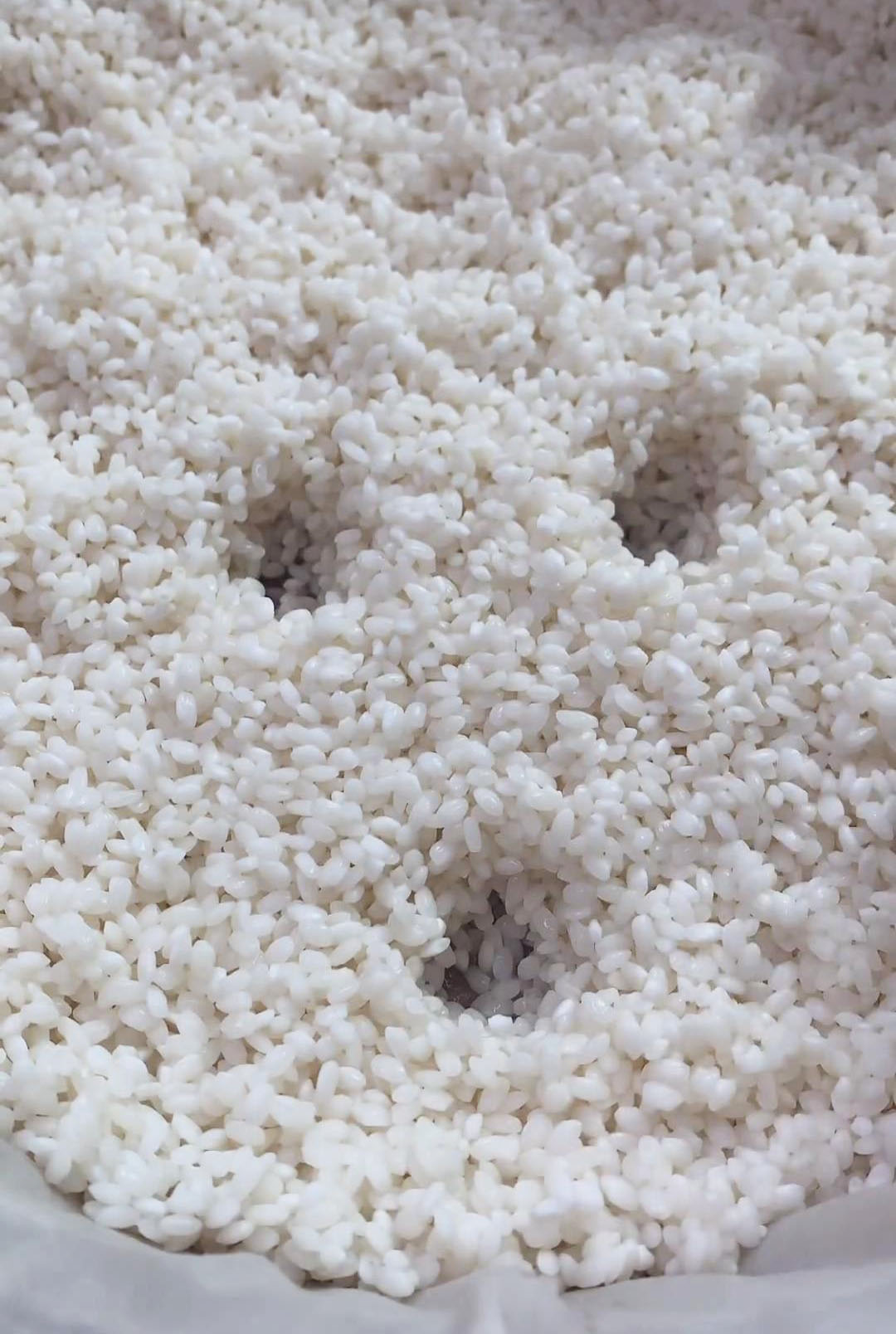
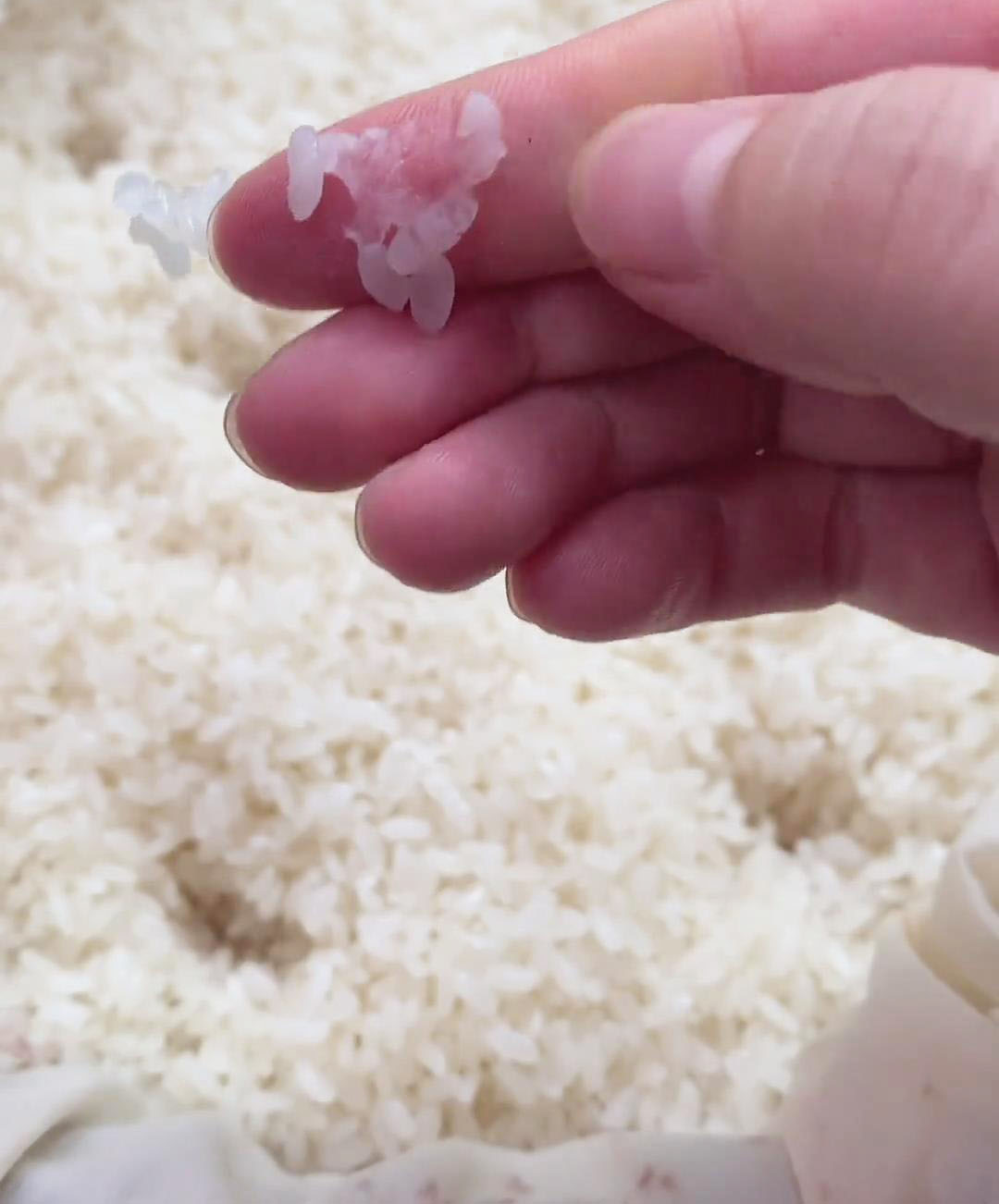
- After steaming, transfer the rice to a clean pot and let it cool. Stir it with a clean spoon to separate the grains.

- Then, gradually add 500 ml of water, adding it in two batches, and mix gently each time until well combined. If using your hands, be sure to wear clean plastic gloves to avoid contamination.
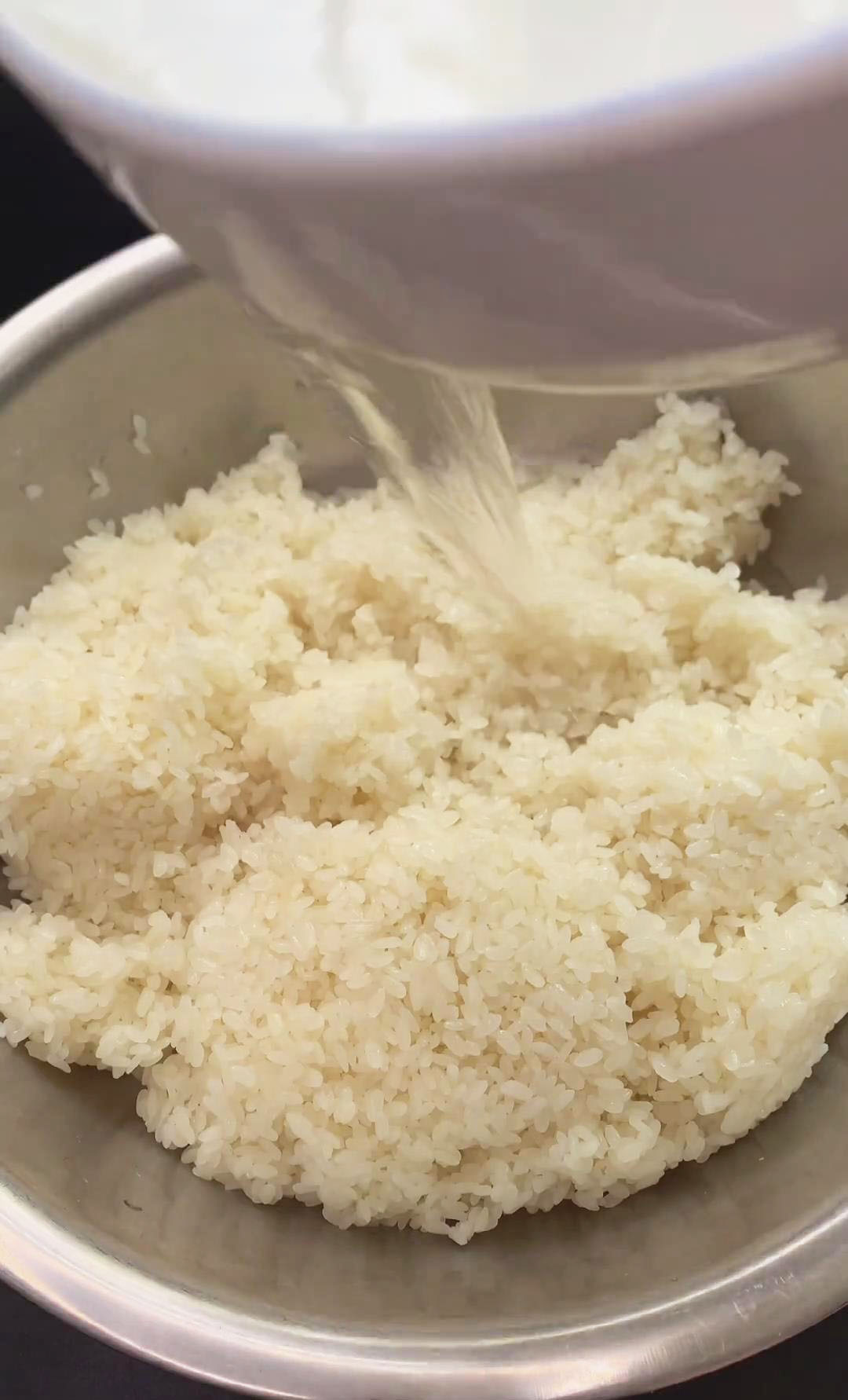
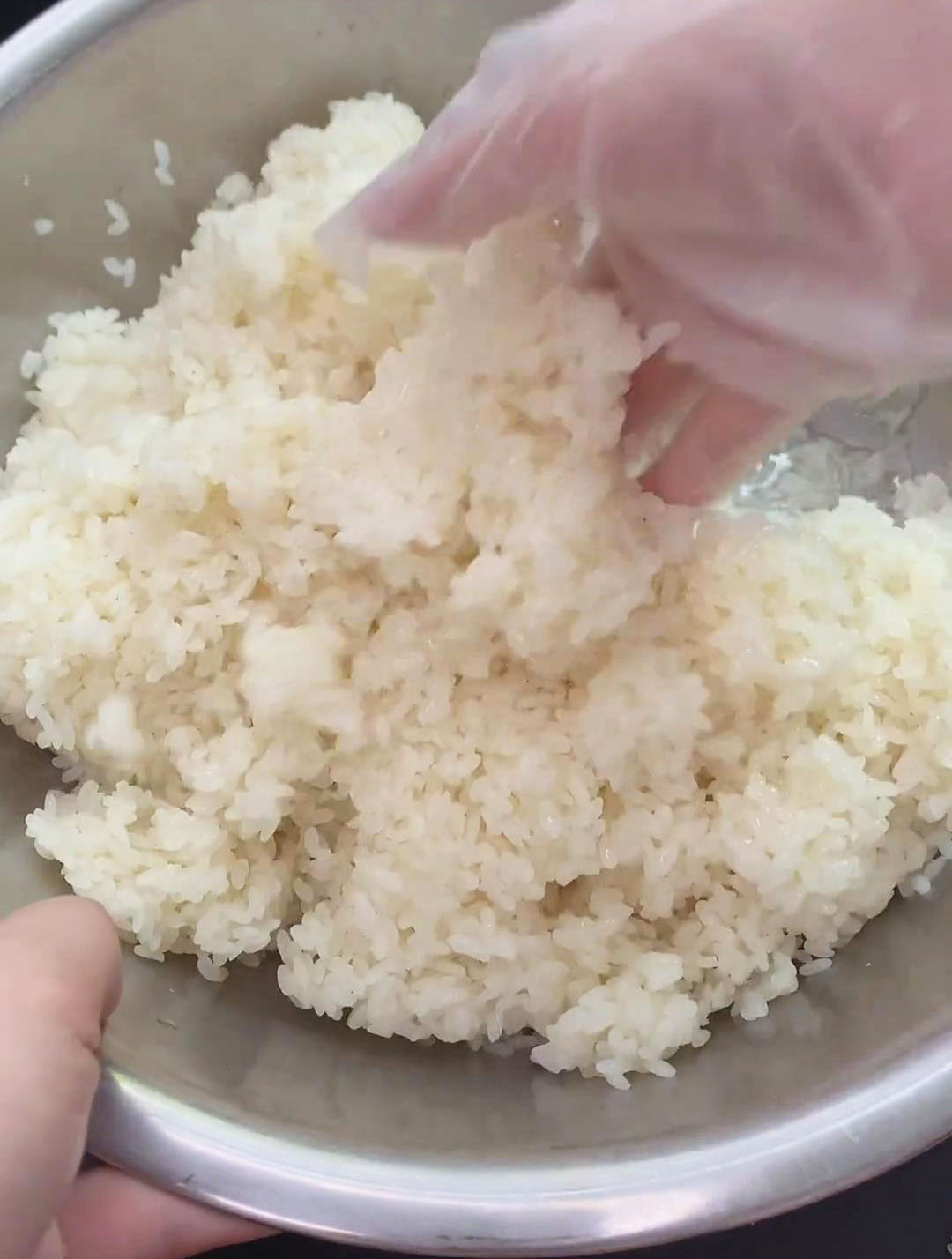
- Grind the Shanghai yeast balls into powder. Use only 2g of yeast and mix it thoroughly with the rice. Do not add too much yeast since it can make the rice taste sour, especially in the summer.
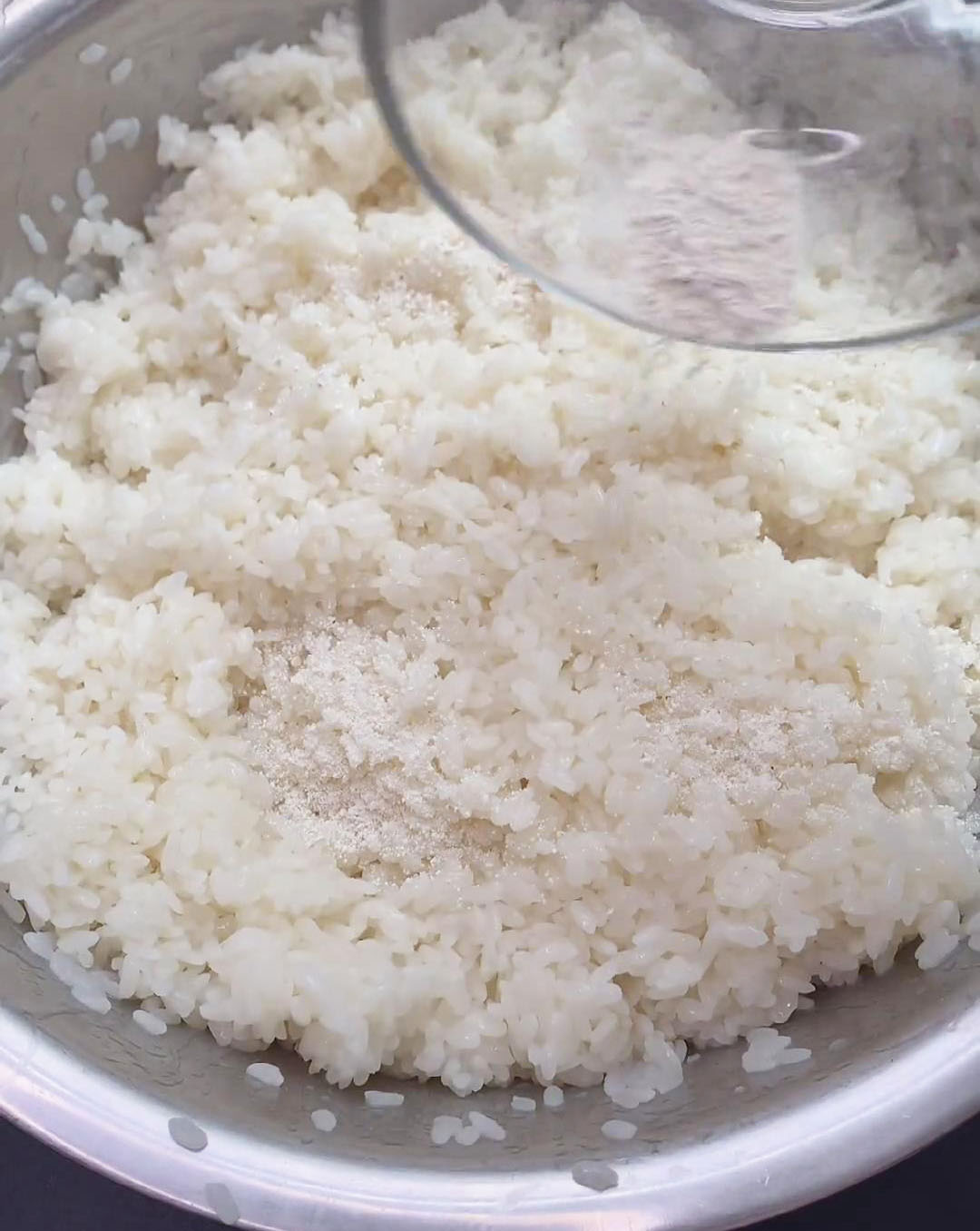
- Once mixed, flatten the rice mixture, create a small hole in the middle, and cover it twice with plastic wrap. Creating a hole up to the base of the container helps you check whether liquid has been produced during fermentation. The liquid should fill the hole you made. Moreover, covering it with plastic wrap twice prevents contamination while allowing enough oxygen to activate the fermentation process.
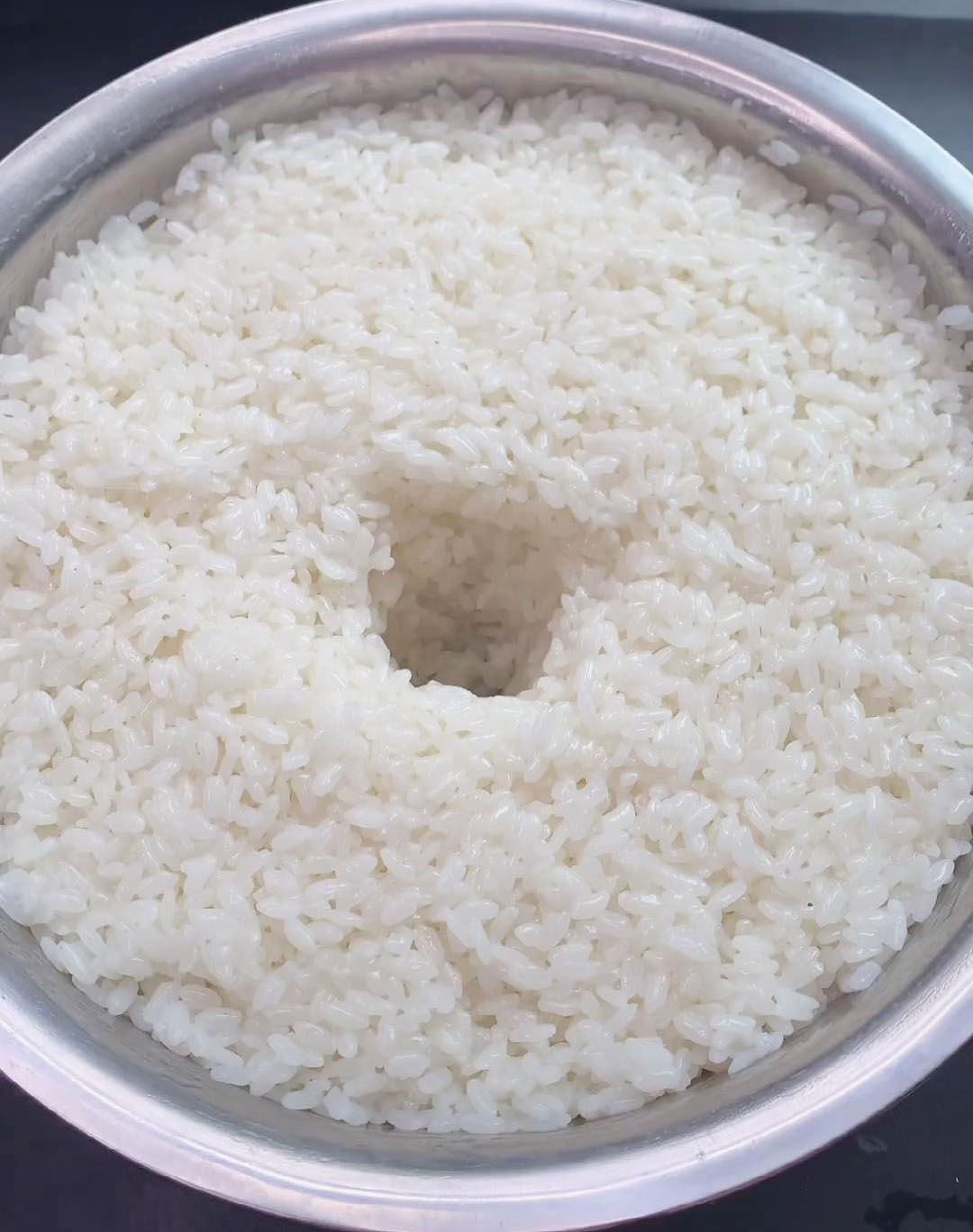
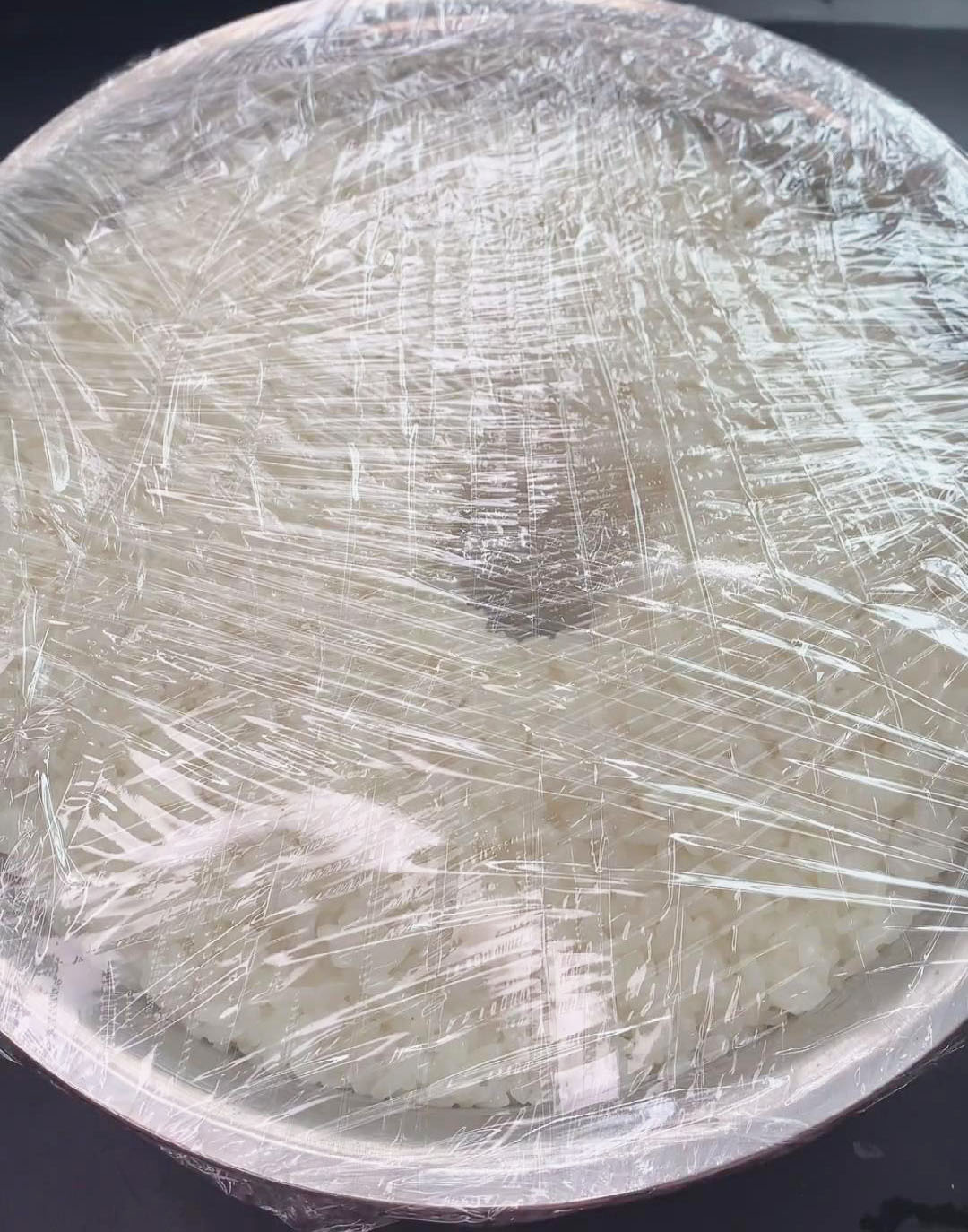
- Let it sit on the counter for 2 days. Ideally, it should be placed in a warm environment and away from sunlight. You will notice the rice turns from dry to wet since it is producing liquid. Moreover, the rice should float to the top after producing liquid.
- After 2 days, taste it and check if it is sweet. If it is not sweet, you may need to ferment it longer. Depending on the temperature of the environment, the duration of fermentation can take 2 or more days.

- Store in a clean glass jar or any airtight container and refrigerate as soon as possible to stop the fermentation process. The best sweet taste is enjoyed during the first week.

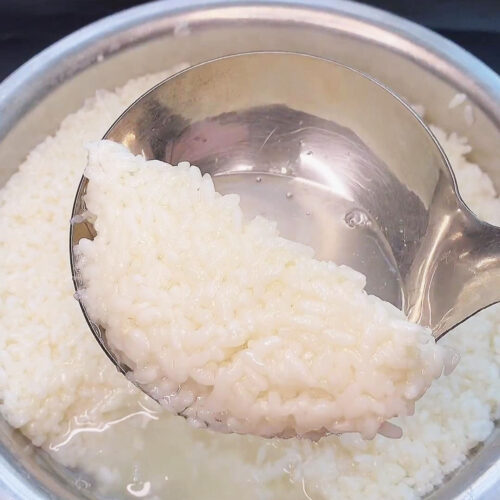
How To Make Jiu Niang
Ingredients
- 1200 g of glutinous rice preferably short-grain for a sweeter taste
- 500 ml of water do not use tap water
- 2 g of Shanghai yeast balls
Instructions
- First, soak the glutinous rice overnight.Soaking makes the rice more tender after steaming.
- After soaking, spread the rice evenly on a steamer tray lined with cloth and create holes in it. Steam for 30 minutes or until the rice becomes soft and sticky. Use steaming equipment, and avoid using a rice cooker for this step since it may affect the taste.
- After steaming, transfer the rice to a clean pot and let it cool. Stir it with a clean spoon to separate the grains.
- Then, gradually add 500 ml of water, adding it in two batches, and mix gently each time until well combined. If using your hands, be sure to wear clean plastic gloves to avoid contamination.
- Grind the Shanghai yeast balls into powder. Use only 2g of yeast and mix it thoroughly with the rice. Do not add too much yeast since it can make the rice taste sour, especially in the summer.
- Once mixed, flatten the rice mixture, create a small hole in the middle, and cover it twice with plastic wrap. Creating a hole up to the base of the container helps you check whether liquid has been produced during fermentation. The liquid should fill the hole you made. Moreover, covering it with plastic wrap twice prevents contamination while allowing enough oxygen to activate the fermentation process.
- Let it sit on the counter for 2 days. Ideally, it should be placed in a warm environment and away from sunlight. You will notice the rice turns from dry to wet since it is producing liquid. Moreover, the rice should float to the top after producing liquid.
- After 2 days, taste it and check if it is sweet. If it is not sweet, you may need to ferment it longer. Depending on the temperature of the environment, the duration of fermentation can take 2 or more days.
- Store in a clean glass jar or any airtight container and refrigerate as soon as possible to stop the fermentation process. The best sweet taste is enjoyed during the first week.

